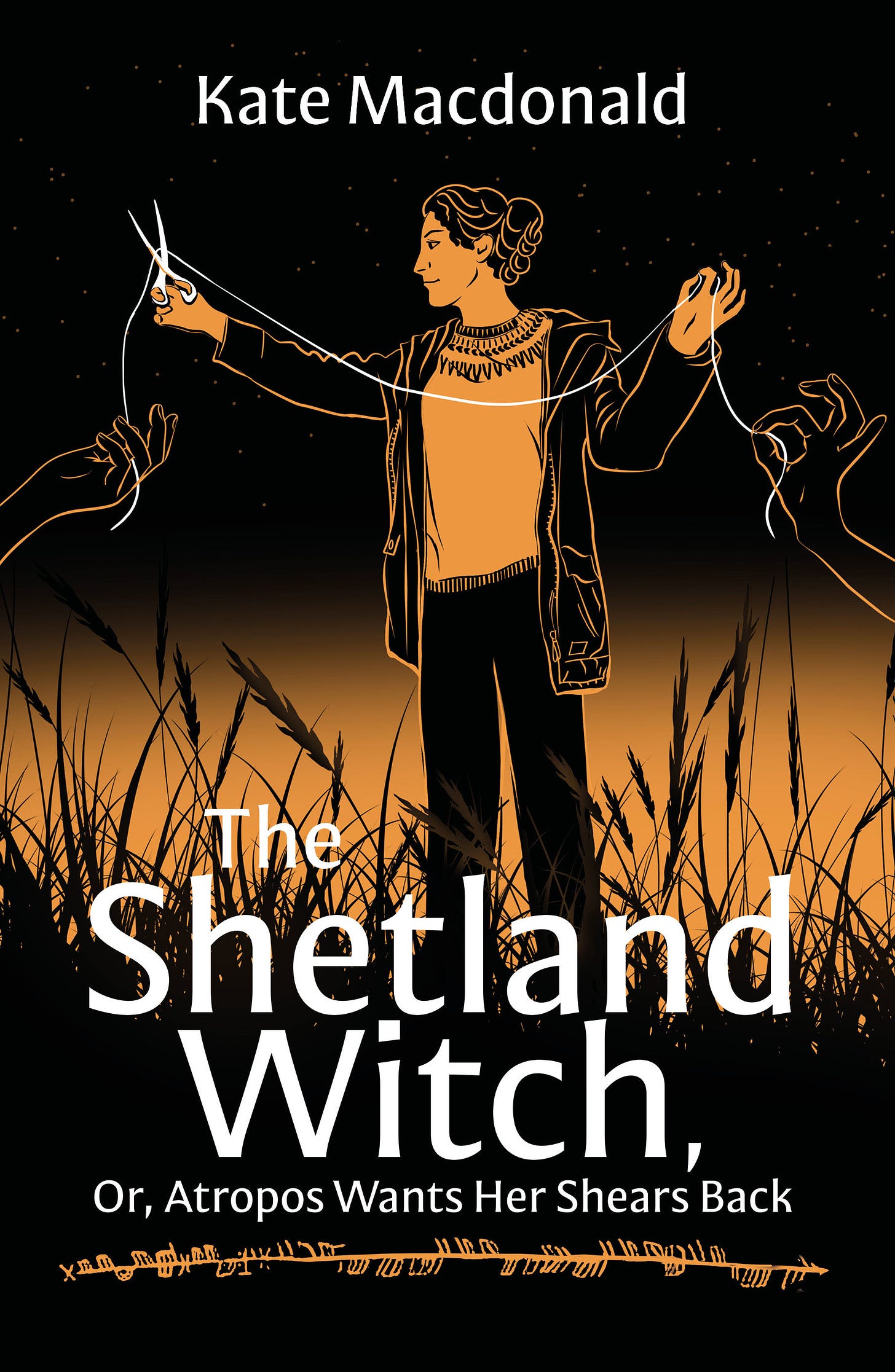If you’ve been thinking about buying the ebook of The Shetland Witch, I’ve arranged a Hallowe’en offer with a nice 20% discount. The price varies slightly depending on whether you look at amazon.com or amazon.co.uk, but it’ll be a discounted price for the rest of this week. Have a look!
I’ve been feeling ambivalent about Amazon for over twenty years. I never bought very much from them but occasionally they were conveniently rapid in delivery, or were the only place I could get the essential something from. Then I read stories about their (then, probably still now) appalling treatment of un-unionised workers, and consciously stopped buying from them. Then one Christmas we received a large jigsaw from Amazon, sent in error probably because a harassed worker had typed in the wrong address. I was (naively) shocked when Amazon told me to keep it. We hadn’t paid for it, and it ought to have been sent on to the right recipient. But it was too much bother for Amazon to sort that out.
That came back to me a few months ago. Six years ago I was full of triumph because I had finally successfully navigated the Kindle system so the ebooks published by my small indie press, Handheld Press, could be bought through Amazon. That was a huge boost for our sales: I was so thankful. Amazon has the reach, the worldwide market, the easy(ish) interface that most shoppers understand, and it has the systems that protect ebooks from being passed around multiple users like pdf files. One ebook per customer, one reader per ebook. (Not being an ebook purchaser myself I had not realised that you only borrow Kindle files, you never own them.)
A year after that we signed up with Ingram, a worldwide distributor who arranged for all our books, in all formats, to be sold through Amazon. Oh the fun we had for years trying to appease the ‘computer says no’ problems Amazon continually threw back at us. During the pandemic years we began to realise the downside of Amazon’s immense purchasing power: they buy lots of books at a swingeing discount, anticipating what will sell, and when the books don’t sell they are returned to Ingram’s warehouse.
Two months ago Amazon returned 170 Handheld books to Ingram that they now considered an over-order. About 70 of these were still in an acceptable condition to be put back on the warehouse shelves for selling. The remaining 100 books were smashed, bashed, torn, damaged, dirty, and ‘hurt’, in the quaint Ingram euphemism for ‘unsaleable’. Who paid for those 100 ruined books, thrown carelessly around by overworked Amazon workers under instructions to not bother taking care of publishers’ property? (None of the books that Amazon orders are paid for until three months after the customer buys them.) Handheld did. We lost their value, their production costs, their shipping and handling costs, all because Amazon, and the book trade more widely, does not care about publishers’ property. (That’s one of the reasons Handheld is winding down its business: we’re tired of battling the book trade.) I remembered the jigsaw then.
I was still ambivalent when I signed up with Amazon for my own novel. I’m now wondering when to move The Shetland Witch away from Amazon to another print on demand firm which also sells ebooks with DRM protection. I see no reason to support Amazon much longer. Handheld is leaving them when our Ingram contracts expire. I don’t like the quality of their print on demand printing (the covers have a horrible soapy feeling and a too-thin board), but they’re affordable and they are a worldwide bookseller. I can’t afford traditional printing, and I certainly don’t want to be lumbered with boxes of books in the garage that no-one will buy. Print on demand it has to be, but I am now thinking that it doesn’t have to be with Amazon for much longer.





Amazon is a two edged sword. I own a Kindle as well as running the program on my computer. It started because the only way I could get a craft book I wanted was by Kindle, and I have since "bought" a lot of craft books that way because the printed version got too expensive. Now the app has been updated and I can no longer read half of them! Not funny given the price I have paid for some of them, which turned out to be more than the paperback price once the print version came out. Amazon takes its readers for a ride as much as it does its authors! Unfortunately it seems to have managed to sign up most of the non-fiction authors anyone could ever want to read, particularly in the crafts area, my interest.
I have to be honest though, thanks to cataracts I started going blind before Covid, and the only way I could read was on a Kindle, and after three eye operations I still have problems reading a printed book. Kindle has been a life-saver. Taking a laptop to curl up and read is not quite the same. We don't have much choice of e-readers here in Australia, Kobo is more expensive, and none of the others can be found in a store near me and they are unlikely to have the text books I am after.
I have recently seen some new releases on Kindle that state there is no DRM on their Kindle books. Whether the authors have great standing with Amazon or not, it might be the start of something that could benefit authors and readers alike? Fingers crossed.